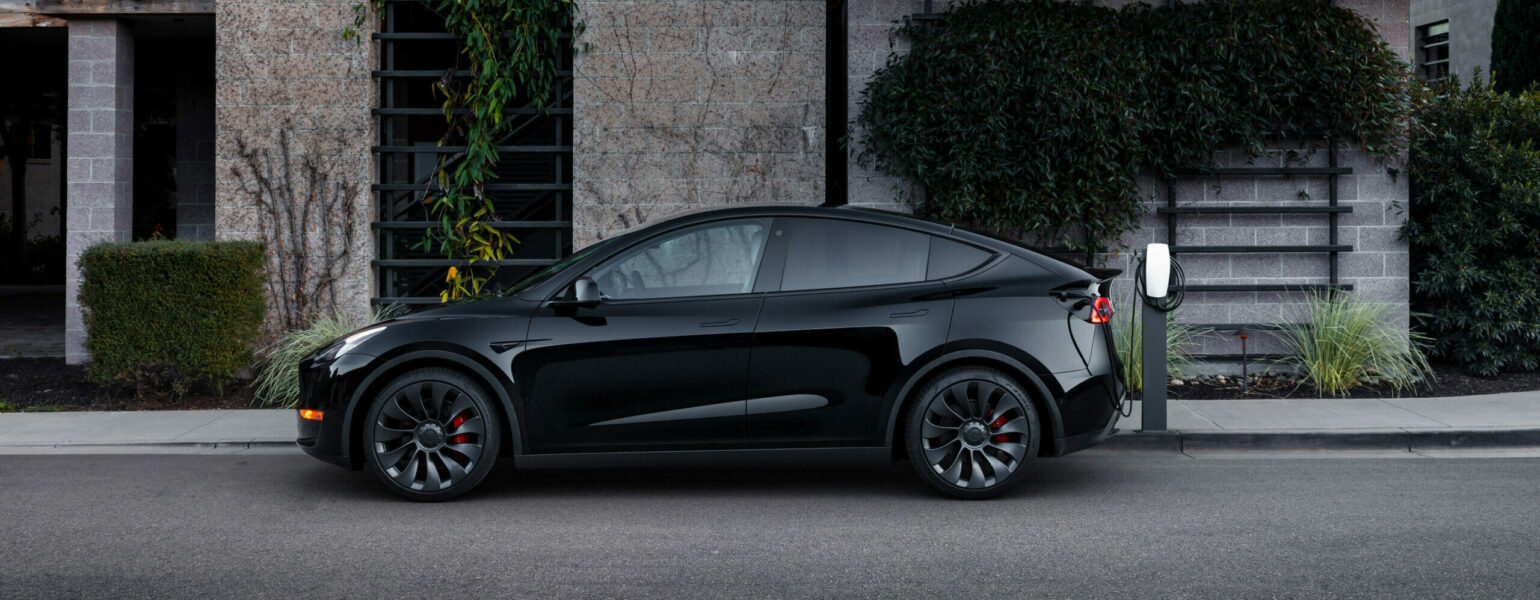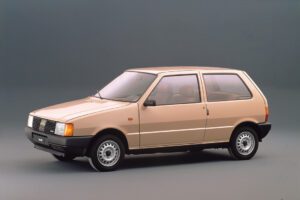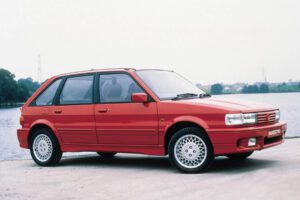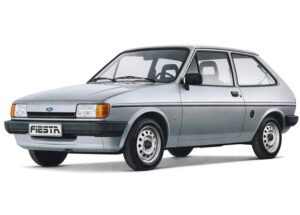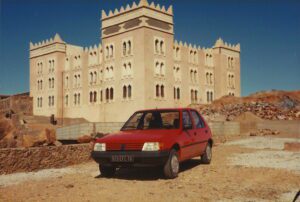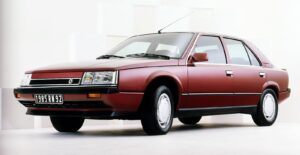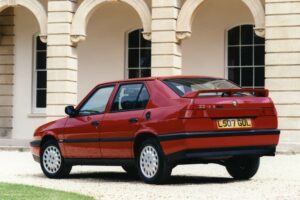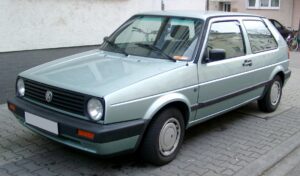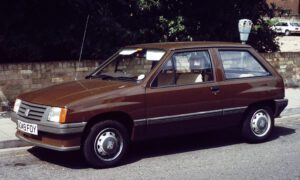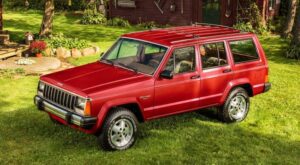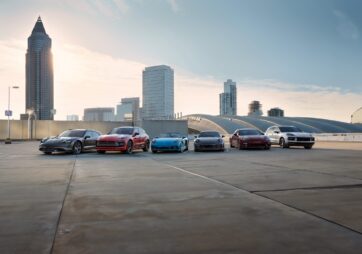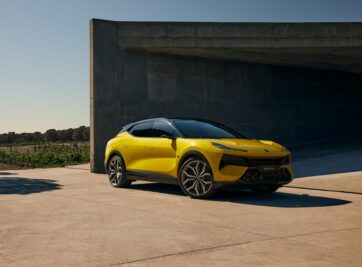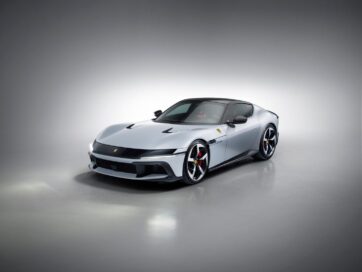
Surprising Classic Cars – Part 1
Owning a classic car is something that often involves a lot of hard work, a good knowledge of parts and breakdown fixes and a fastidious attention to detail. If mostly also means fair weather driving in order to preserve the car’s condition and the reliability of the engine mechanics. One of the deciding factors with classic car status is the fact that when a vehicle is over 40 years old it is no longer required to pay the road fund license or to have an annual MOT, as it has now reached an age where it can be considered a ‘historic vehicle’.
With cars becoming generally more reliable and likely to be running for a longer period of time, it might be quite surprising to find out some models of car that this year turn 40 years old and as such now qualify in that ‘classic car’ category. Part 1 of our list of surprising classic cars includes everyday cars that you may remember your parents owning, learning to drive in, or even still currently own, that are now considered as classic cars.
Fiat Uno
Built to replace the aging 127, the Fiat Uno was a masterclass from famed designer Giorgetto Giugiaro. Despite its boxy appearance, the Uno had a very efficient drag coefficient and was celebrated for its fuel economy because of this, as well as its interior space, ride and handling. A former European Car of the Year, Fiat sold over 6 million Uno’s that were manufactured in Italy up until 1995, and the car was so well loved that production continued right up until 2014 after being built in countries such as Poland, Argentina, Brazil, India, Morocco, South Africa, The Philippines and many more. 300,000 Uno’s were sold just in the UK, with over 40,000 being sold in 1988 alone, at the time one of most popular imported cars in Britain.
Austin Maestro
Even more popular than the Uno in Britain was the Austin Maestro. Built by British Leyland and then the Rover Group, the British built Maestro sold over 600,000 units in its 12 years on sale. Designed to replace both the Allegro and Maxi, the Maestro brought new thinking with pioneering firsts for its class. This included body-coloured plastic bumpers, an electronic engine management system, bonded laminated windscreen, homofocal headlamps, asymmetrically folding rear seats, adjustable height seatbelt anchors and 12,000 mile service intervals. Despite sales of 80,000 in its second year, Austin expected higher sales figures and a reputation for unreliability and poor build quality affected its appeal. Despite this, the Maestro was one of the most familiar sights of the 1980’s and many former owners will have fond memories of the model.
Ford Fiesta (Mk II)
The second generation of Ford Fiesta was a mildly facelifted version of the first generation, such was the success of the model that there was little point in changing things too much. With wrap around headlights and a wider front track to accommodate updated engines, the car borrowed much from the updated Escort to save costs. In its best year the model sold 150,000 units in the UK alone, almost 4 times the Uno and double that of the Maestro, only the Ford Escort sold more cars at that time. In fact, the two generations of Fiesta combined sold in excess of 4.5 million cars worldwide.
If the Maestro was a familiar sight on the roads in the 1980’s, the Fiesta was taking up all the other spaces, such was the popularity of the small Ford. The XR2 of 1986 is one of the most popular ‘Fast Fords’ of the era and are commanding high prices as a modern classic car in today’s market.
Land Rover Defender 110
The iconic Defender silhouette has been around for 75 years now, yet it was only in 1983 that the name ‘Defender’ was added to the model, before that it was simply known as a Land Rover. Introduced to distinguish the Defender from the newly created Discovery, the Defender included 90, 110 or 127 numbers to signify wheelbase length. What started as a utilitarian workhorse to help get around the farm became so much more than that and the ‘Defender’ name is now one of the most iconic names in motoring.
Though the styling may not have changed much at all, the Defender iteration brought with it a host of updates to ensure it continued to perform the way a Land Rover should. Coil springs replaced leaf springs to the suspension for articulation and ride comfort, a lockable centre differential gave permanent four-wheel drive to on road driving and the interior was given a makeover to bring it more up to date. Due to the popularity of the model, the ‘original’ Defender will always be seen by many as a classic vehicle, at least now the first of the updated model is officially classed as one.
Peugeot 205
Another small hatchback on the list and for many the most iconic of them all. Such was the success and the fondness for the 205 that it was declared by CAR Magazine as ‘Car of the Decade’ and What Car’s ‘Car of the Year’. As well as its good looks, something that inspired the rest of the Peugeot range at the time, the main appeal of the 205 was down to its ride and handling thanks to the thoroughly modern independent suspension set up. Due to its compact size, this also meant that minimal intrusion from the wheel arches gave a flat load space in the boot as well as more space.
The 205 sold more than 5.2 million units globally, with 400,000 in the UK, also unusually for a car from that era, more than 14,000 of them were still on the road in the UK alone by as late as 2014. For many, the iconic 205 GTI is already considered a modern classic and the appreciating prices are certainly a sign of its popularity.
Renault 25
In its day, the Renault 25 was the flagship of the French car maker’s range being the most expensive, prestigious, and largest model in their line-up. As with many cars of the era, the wedge shape styling seemed at odds to the primary aim for the design of the car, for effective aerodynamic efficiency. In fact, at launch the car was not only easily the most fuel-efficient car in its class, but it briefly held the title of ‘world’s most aerodynamically efficient mass production car’.
The ride comfort and handling were praised by many, as was the way with many French cars of the era, and it set the standard for equipment levels in its class. Amongst the features were express functions for the power windows, voice alert notifications for minor functions, and remote control for the stereo mounted next to the steering wheel. The controversial interior was very futuristic for its time and was created by Lamborghini designer Mercello Gandini. In its 9 years of production, the 25 sold over 780,000 units, a fantastic result for a French executive car.
Alfa Romeo 33
At a time when Alfa Romeo were on a roll with their sporty models, the 33 was a small family car with sporting credentials based on their outgoing Alfasud. Utilising the floorplan, chassis and drivetrain from the previous car yet with modifications to the suspension and braking system, the 33 was renowned for its nimble handling and powerful engines. The Italian styling and unique boxer engines were a unique appeal for the 33, as well as innovations such as an adjustable steering wheel that also adjusted the instrument binnacle. As with many Alfa Romeo’s, the car suffered with unreliable electronics and was prone to rust, but that didn’t deter buyers too much as almost 1 million units were sold globally in its 11 year lifespan.
Volkswagen Golf (Mk II)
The success of the first-generation Golf meant that by the time it was due to be replaced in 1983, almost all mainstream manufacturers had a Golf-sized family hatchback. To keep their customers happy the second generation, although growing in size, didn’t deter too much from the original’s Giugiaro-designed clean lines. Slightly softer and rounded in appearance, the car was bigger in every way, including weight, a theme that would follow for every generation of Golf since. The Mk II Golf was Volkswagen’s biggest selling car for the 9 years it was in production and by the time the third generation came about it had sold over 6 million units. An early model GTI, rare Rallye or even more rare Country are the most sought-after models, with prices appreciating year on year for this iconic iteration of one of the most popular car models of them all.
Vauxhall Nova
A direct rival to the ever-popular Fiesta, the Vauxhall Nova was the alternative choice for many, especially in Britain. A replacement for the ageing Chevette, the Nova was a much more modern car and brought the Vauxhall offering right up to date against its competition. A constant feature in the top 10 selling cars of the year throughout its lifespan, the Nova sold almost 500,000 units during its 10 year production cycle. Popular with first time drivers and those looking to modify their cars means that finding an original example today will also command a high price, especially if you are looking for a performance GSI, GTE or SRi version. Despite the high sales figures, the Nova was often hampered by rust and in 2016, just 1,700 examples remained on UK roads despite its initial popularity.
Jeep Cherokee (XJ)
The Jeep Cherokee was the company’s first all-new design since 1963 and is widely regarded as the precursor to the SUV we know today. Just like the Range Rover had done for 4×4’s, the Cherokee was at the forefront of converting people’s idea that an off-road vehicle could be used as a luxury vehicle rather than just for all-terrain ability, causing other manufacturers to take note about the potential of the luxury 4×4. Automobile magazine called the car ‘one of the 20 greatest cars of all time’ for its design and ‘possibly the greatest SUV shape of all time’. A testament to its ingenious design and dependable popularity is the fact that the model remained on sale from 1983 right through to 2001 in the US, and even on to 2014 in some markets.
Future Classic Car Finance
If you are looking at purchasing any of the above vehicles, our expert team have over 17 years’ experience in sourcing tailored car finance products, including these models mentioned above. Whatever type of car you’re looking for, you can get in touch with us either by calling 0800 012 6666 or clicking here.
With over 1,700 Trustpilot reviews, having funded over £1.7 billion and counting, and four-time consecutive award winners of the Best Specialist Car Finance Provider award from 2020 through to 2023, you too can find out why thousands of people trust us time and time again to find a smarter, tailored funding solution when looking for your next dream car.
Make sure you follow us on Instagram, LinkedIn and Facebook to keep up to date with what’s happening in the market and to see some stunning photos and videos of the amazing cars we fund.
